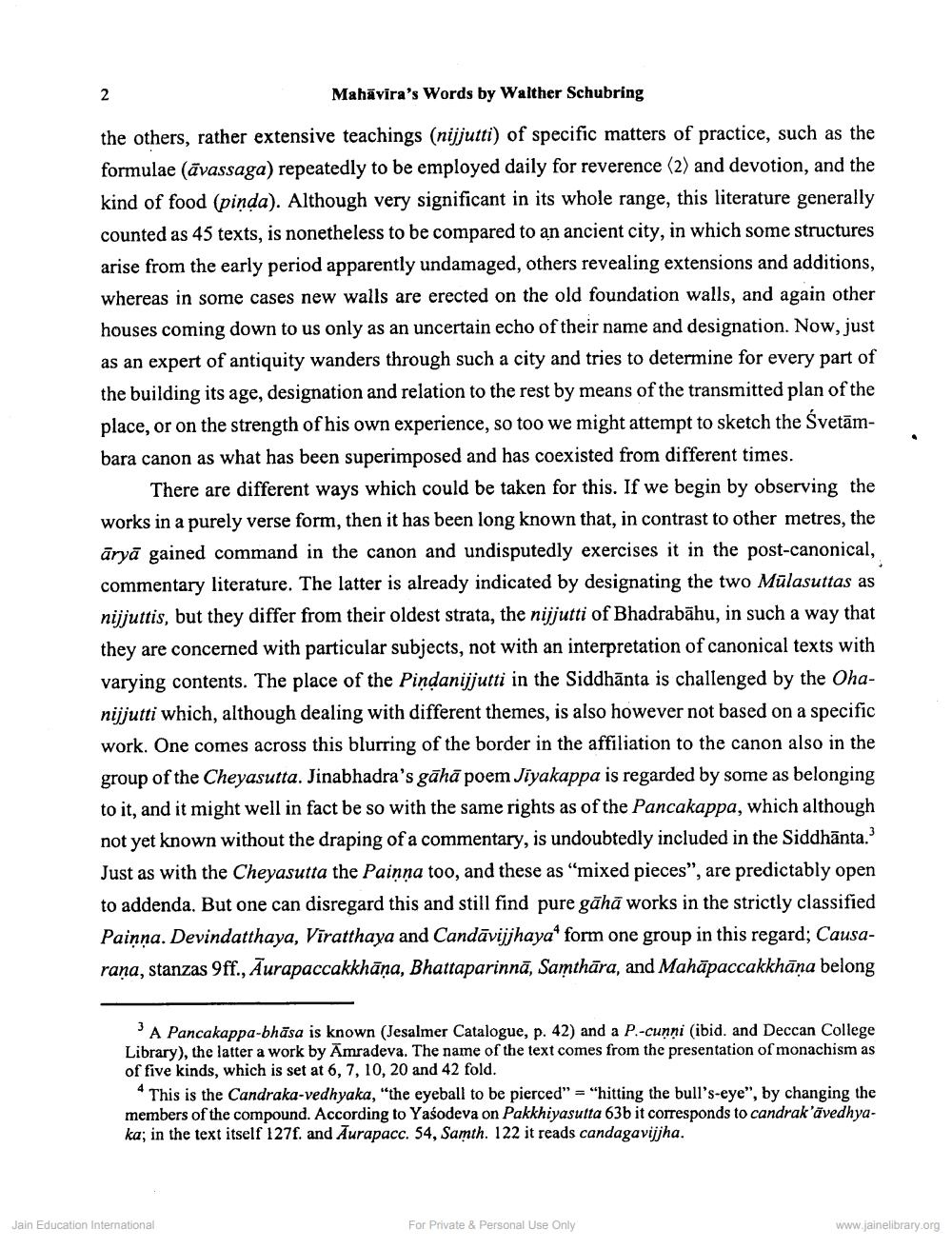________________
Mahāvira's Words by Walther Schubring
nes.
the others, rather extensive teachings (nijjutti) of specific matters of practice, such as the formulae (ävassaga) repeatedly to be employed daily for reverence (2) and devotion, and the kind of food (pinda). Although very significant in its whole range, this literature generally counted as 45 texts, is nonetheless to be compared to an ancient city, in which some structures arise from the early period apparently undamaged, others revealing extensions and additions, whereas in some cases new walls are erected on the old foundation walls, and again other houses coming down to us only as an uncertain echo of their name and designation. Now, just as an expert of antiquity wanders through such a city and tries to determine for every part of the building its age, designation and relation to the rest by means of the transmitted plan of the place, or on the strength of his own experience, so too we might attempt to sketch the Svetāmbara canon as what has been superimposed and has coexisted from different times.
There are different ways which could be taken for this. If we begin by observing the works in a purely verse form, then it has been long known that, in contrast to other metres, the āryā gained command in the canon and undisputedly exercises it in the post-canonical, commentary literature. The latter is already indicated by designating the two Mülasuttas as nijjuttis, but they differ from their oldest strata, the nijjutti of Bhadrabāhu, in such a way that they are concerned with particular subjects, not with an interpretation of canonical texts with varying contents. The place of the Pindanijjutti in the Siddhānta is challenged by the Ohanijjutti which, although dealing with different themes, is also however not based on a specific work. One comes across this blurring of the border in the affiliation to the canon also in the group of the Cheyasutta. Jinabhadra's gāhā poem Jiyakappa is regarded by some as belonging to it, and it might well in fact be so with the same rights as of the Pancakappa, which although not yet known without the draping of a commentary, is undoubtedly included in the Siddhānta. Just as with the Cheyasutta the Painna too, and these as “mixed pieces", are predictably open to addenda. But one can disregard this and still find pure gāhā works in the strictly classified Painna. Devindatthaya, Viratthaya and Candāvijjhaya* form one group in this regard; Causarana, stanzas 9ff., Āurapaccakkhāna, Bhattaparinnā, Samthāra, and Mahāpaccakkhāna belong
JA Pancakappa-bhāsa is known (Jesalmer Catalogue, p. 42) and a P.-cunni (ibid. and Deccan College Library), the latter a work by Amradeva. The name of the text comes from the presentation of monachism as of five kinds, which is set at 6, 7, 10, 20 and 42 fold.
This is the Candraka-vedhyaka, "the eyeball to be pierced" = "hitting the bull's-eye", by changing the members of the compound. According to Yaśodeva on Pakkhiyasutta 63b it corresponds to candrak'āvedhyaka; in the text itself 127f. and Aurapacc. 54, Samth. 122 it reads candagavijjha.
Jain Education International
For Private & Personal Use Only
www.jainelibrary.org




